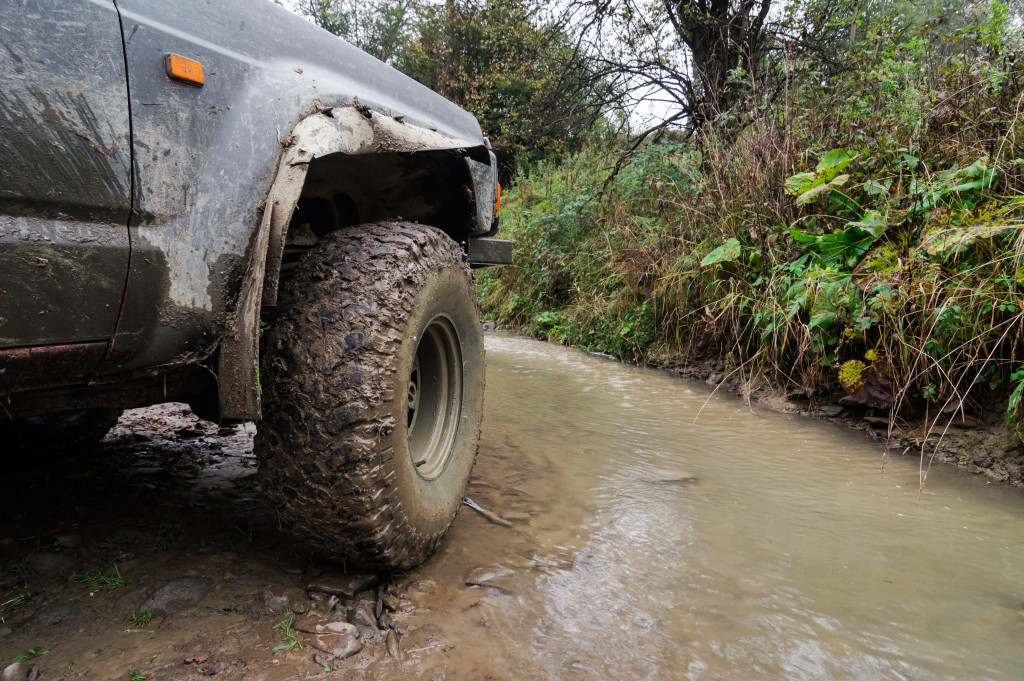Owning a car isn’t just about driving around town. While this type of driving can be incredibly fun and rewarding, it also requires extra preparation to ensure everything goes smoothly on your journey.
If you’re planning on taking your vehicle off the beaten path, there are a few things you’ll need to do to ensure it’s up for the challenge. With a bit of preparation, you can confidently hit the trails, knowing that your vehicle is ready for whatever nature throws. Here’s what you need to do to get your car, truck, or SUV ready for an off-road adventure.
Inspect Your Tires
The first thing you’ll want to do is take a good look at your tires. They should be in good condition with plenty of treads left for gripping the road—or lack thereof. If you’re not sure about the state of your tires, stop by a local tire shop and have them take a look. They’ll be able to tell you if they need to be replaced or if they can just be repaired. Keep in mind that although all-terrain tires are not required for off-roading, they can certainly make the experience more enjoyable. They’re designed to provide better traction and stability on unpaved surfaces.
Invest in a Skid Plate
When driving off-road, you’re likely to encounter obstacles that could cause severe damage to your vehicle’s underside. To protect it, consider investing in a skid plate—a metal or plastic shield that attaches to the vehicle’s frame and helps deflect debris away from vulnerable parts of the car.
However, you can’t just buy any skid plate you see—you need to ensure it’s compatible with your vehicle. For instance, if you’re driving a Toyota Tundra, you need to look for a Tundra engine skid plate designed for your specific model year. It will ensure that you have the ultimate protection while off-roading.
Check Your Battery and Fluids
Before heading out on your adventure, checking that your car’s fluids are complete and that the battery is working correctly is essential. Low fluid levels can cause overheating or other problems that could lead to costly repairs. Additionally, it’s a good idea to bring extra oil if you need to top up during your trip. It would also be wise to get a portable jump starter, just in case your battery dies unexpectedly.
Check Your Shocks
Next, you’ll want to check your shocks. They play a critical role in providing a comfortable ride, even on uneven terrain. Over time, however, they can lose their effectiveness and need to be replaced. A simple way to check your shocks is to push down on each corner of the vehicle—you should feel the suspension compressed but then return to its original position relatively quickly. If it feels like it’s taking a long time for the suspension to return to its original work or if it feels bouncy when you push down on it, then it’s time for new shocks. Again, this is something a local mechanic or 4×4 shop should be able to help you with.
Pack Plenty of Supplies
Once you’ve taken care of the mechanical components of your vehicle, it’s time to start packing for your trip. Make sure you have plenty of food and water and any tools or supplies you might need in case of an emergency—even if that emergency is just a flat tire. It’s also a good idea to pack some extra clothes in case you get wet or dirty while out on the trails. And speaking of getting wet.
Moreover, when you set out on your off-road adventure, bring along some extra oil, coolant, and fuel, just in case. It’s always better to be safe than sorry, especially when being out in the wilderness.
Protect Your Interior
You might not think about it, but protecting your interior from water and mud is just as important as protecting the exterior of your vehicle when off-roading. No one likes sitting in a muddy, wet seat! Invest in some seat covers and floor mats to avoid this unpleasant situation. You can find them designed explicitly for off-roading that will repel water and mud while still being comfortable enough to sit on for hours. Another option is to line the floor of your vehicle with a heavy-duty tarp before adding any other gear—make sure it’s securely fastened, so it doesn’t fly around while you’re driving!
Final thoughts
Following these simple tips, you can get your car, truck, or SUV ready for an off-road adventure without any problems! Remember to inspect your tires, check your shocks, pack plenty of supplies, and protect your interior before hitting the trails. With a little preparation, you’ll be ready for anything nature throws your way!


